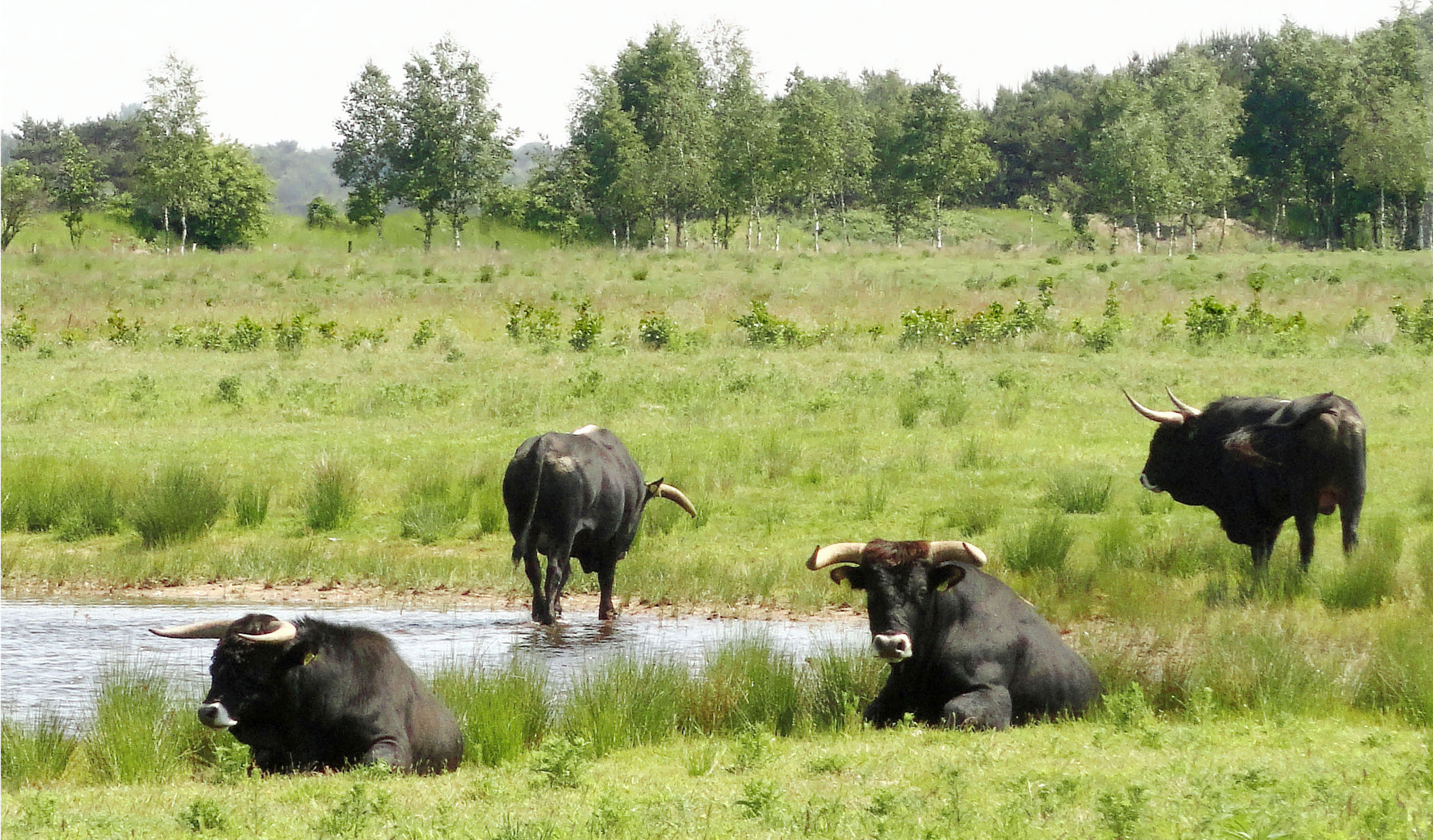 |
| Tauros bulls in Kempen~Broek © Geer vanne Smeed |
EDIT: Geer vanne Smeed told me that according to his opinion the crossbred bulls might be Limia x Maremmana, Maremmana x Maronesa and Maronesa x Limia as those were the breeds present in the herd during the last years
As to the looks of the bulls, the colour is flawless in all individuals. The body shape of the bulls in the foreground cannot be determined as they are lying on the ground, but all of them seem to have a hump and are not that bulky. They might not be quite as large and long-legged as average Taurus bulls, but it is clear from the photos that they are more aurochs-like than classic Heck bulls (such as this one in Vielank, for comparison). As the Tauros Programme and the Auerrind project are cooperating now, future generations might obtain the genes for really large-sized and large-horned animals thanks to Chianina and Watussi-influence.
I especially love the head and horns of the putative Maronesa bull in the front. The horn curvature is identical to some European aurochs skulls (mind that those only show the horn cores, so that the horn sheath would make them longer and more pronounced in life, i.e. the horns of the bulls are still a little shorter and less curved than in an aurochs), and the snout is not as shortened as usual in Maronesa and still longer than in many Heck bulls.





